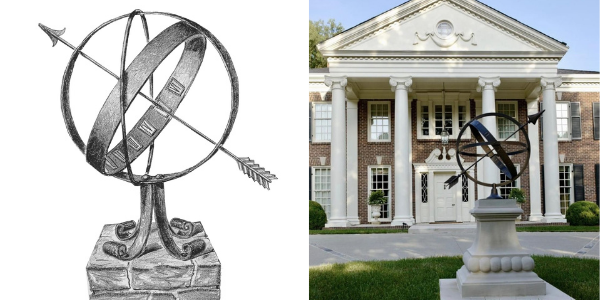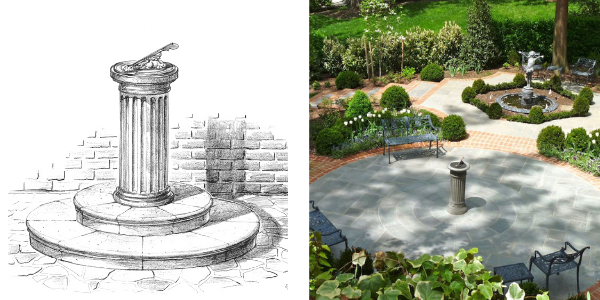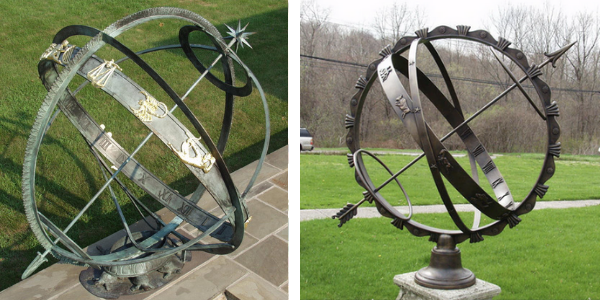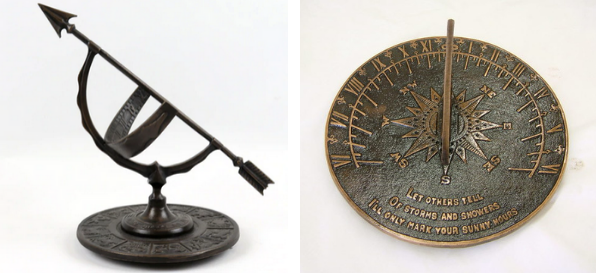Oct 14th 2020
Sundials and Armillary Spheres Bring Art and Function to the Garden
The history of sundials goes back thousands of years. Before the invention of the clock, sundials were a device created to track time from sunrise to sunset based on the sun’s position in the sky and the location of its shadow. Meanwhile, in modern times, sundials and armillaries are incorporated into outdoor spaces today to create focal points in gardens, add a design element, and are even used as artwork. Oftentimes, sundials include a dedication to symbolize the honoring of a notable individual or event.

Armillary Sundials are a favorite addition for classic style designers.
Sundials are part of the Kenneth Lynch & Sons Estate Elements collection of garden ornamentation. Sundials can be incorporated into any setting creating an interest piece for the garden or outdoor space. Larger settings typically allow a large sundial to be a focal point in a garden, appropriate for both classic and modern styles.

Horizontal sundial used in symmetry as a focal point in a garden.
Most sundials are made to rest on pedestals and function in an outdoor setting. We offer designs including horizontal sundials, which are flat, hemispherical sundials which gives the illusion of half of a sphere, but the most ornamental of all sundials is the armillary.

Armillary Sundial in a cozy garden and outdoor settings.
Our armillary sundials are composed of a set of interlocking metal rings, referred to as “armilla”, which is Latin for bracelet. The metal rings form a spherical framework around a fixed rod, called the gnomon, which represents the polar axis of the sky as seen from earth. Our sundial models contain the most essential rings including the horizon, equatorial, and prime vertical. Our larger models may also include the Arctic and Antarctic circles.

Left: Armillary Sundial with signs of the Zodiac. Right: Armillary Sundial with Feathered Band.
Our most popular sundial design, Model 1505 of the Armillary Sundial, is available in three sizes. The small and medium sundial have number characters and the large sundial has roman numerals. The bases are adorned with the signs of the zodiac and the outer band has zodiac symbols. All our models are made to order, allowing our craftsman to set the angle of the gnomon to the latitude where the sundial will be located. Even if the sundial is used primarily as a design element, we want to ensure the functionality of the piece as well. However, it is important to remember that sundials tell solar time, not local time or daylight savings time.

Our sundials come in different shapes, sizes, and detail options.
To function properly as a sundial, the armillary must be tilted to the site's latitude to ensure that the sundial polar axis is parallel to the real earth axis. In essence, the gnomon inclines to the horizon by an angle equal to the latitude of the observer. See our installation video on how to properly orient an armillary sundial once you have your piece at its home location.

Left: Hemispherical Sundial. Right: Bronze sundial with the traditional motto "Let others tell of storms and showers I'll only mark your sunny hours."
Directional markers are also great additions to outdoor spaces or gardens with sundials, establishing True North as well as the direction from which the sun rises and sets. Along with its functionality, directional markers are also a subtle but beautiful addition to a design space as they come in several designs with intricate detailing.

Left: A directional marker featuring the four winds with a beautiful compass rose. Right: Directional marker installed in pavement.

A restoration of a sundial in Springfield, Massachusetts.
We invite you to explore all of our sundials at Kenneth Lynch & Sons and at the project gallery below. We’d love to hear which are your favorites!
Explore Our Sundials
Sundial Product Information and Tips
Video Tutorial: How to Orient an Armillary Sundial

